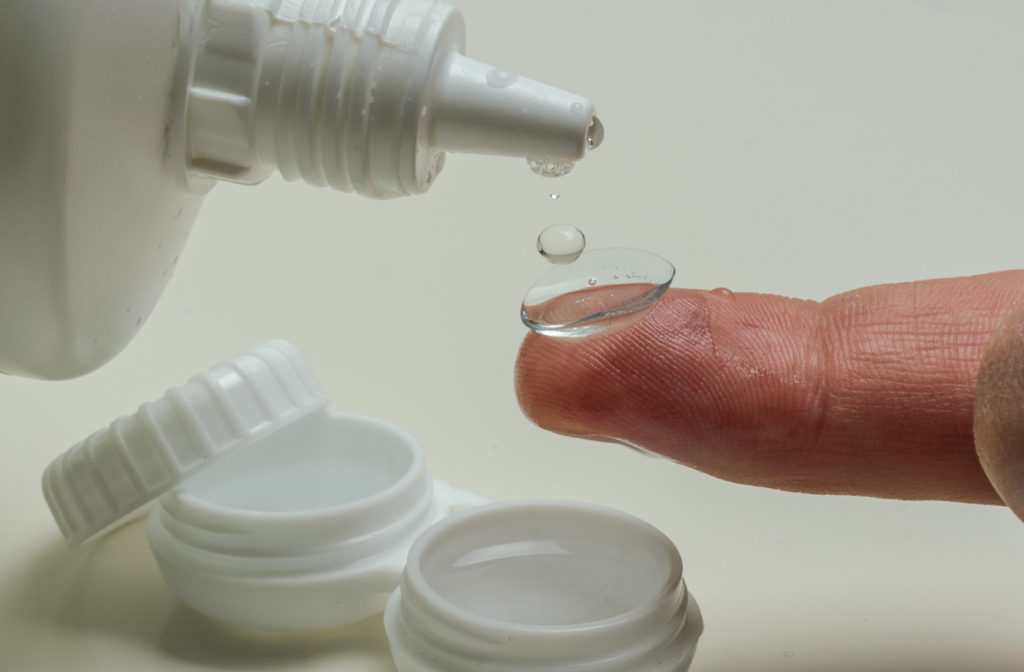Scleral lenses are a popular choice for people with complex vision problems who have not had success with other types of contact lenses. These lenses extend past the cornea and rest on the white part of the eye, creating a liquid reservoir that helps improve vision and comfort.
However, cleaning scleral lenses can be tricky, and improper maintenance can lead to serious eye infections.
Properly cleaning scleral lenses to make sure that they remain comfortable, clear and help you see better should always start with washing your hands, then removing the lenses, cleaning the lenses, and finally rinsing and storing the lenses.
At Total Vision Pleasanton, we do things differently here. Our eye exams use some of the latest technology to pinpoint exactly what you need. And with our clinical and academic knowledge, we can help you tackle those needs head on.
Plus, we’ve got special eye care services for children, individuals with diabetes, and anyone with extra requirements. Sometimes that means scleral lenses, and like all contacts it’s important to keep them clean and fresh.
Understanding Scleral Lenses
Scleral lenses, a type of gas permeable contact lens, are an excellent solution for individuals dealing with certain vision issues. These lenses are uniquely designed to dome over your cornea, resting comfortably on the sclera, which is the white part of your eye.
These lenses are particularly effective at correcting vision problems that stem from an irregularly shaped cornea. Conditions such as keratoconus or other corneal irregularities can be significantly improved through the use of scleral lenses.
Scleral lenses may also provide substantial relief for those suffering from dry eye disease. The design of these lenses allows for a fluid reservoir to form between your cornea and the back surface of the lens. This not only keeps your eyes hydrated but also promotes comfort, making scleral lenses a viable option for those who find regular contact lenses problematic.
To keep your specialty lenses clean, follow these simple steps…
Wash Your Hands
The first step to cleaning scleral lenses is to thoroughly wash your hands with soap and water. This will help to prevent the transfer of dirt, bacteria or viruses to your scleral lenses or your eyes. You can also use an antibacterial hand sanitizer if soap and water are not available, but try to air dry your hands before removing the lenses.
Always follow the key steps for properly washing your hands.

Remove the Lens
Before cleaning your scleral lens, remove it from your eye by gently pulling down your lower eyelid with one hand and carefully pinching the lens with your other hand. Use the pads of your fingertips, not your nail edge, and be sure not to hurt your eye.
If you’re not too keen on using your fingers to take out a hard contact lens, there’s another way you can try. It’s not the go-to method, but it works. You can use a tool called a “plunger” that’s designed for lens removal. If you choose this method, make sure that the plunger only touches the contact lenses and not your eyes.
Clean the Lens
Once you’ve cleaned your hands well and carefully removed your scleral lens, take one of your lenses at a time and place it in the palm of your hand. Add a few drops of a disinfecting solution to the lens.
When it comes to cleaning solutions for contact lenses, you’ve got two main options. You can go with a hydrogen peroxide-based one or a multipurpose solution.
With your other hand, gently rub the lens back and forth. This will help remove any debris or microorganisms that might be stuck to it. After you’ve done this, you’ll need to rinse the lens again with the disinfecting solution.
Once the lens is all clean, place it in a proper lens case and fill the case up with fresh disinfecting solution.
Let the lens soak in the solution for several hours. This gives the solution time to kill any remaining germs. In the morning, just give the lenses a quick rinse before popping them back in.
Remember to follow the instructions your eye doctor prescribed or those on the packaging for your specific contacts: never use water, hydrogen peroxide, baking soda, saliva, saline solution, or artificial tears to clean your lenses. These substances can damage the lenses and potentially harm your eyes.
Always stick to the disinfecting solution prescribed by your eye doctor, and when in doubt, consult with your eye doctor.
Store the Lens
Once the lens has been cleaned and rinsed, it should be stored in a clean and sterile case provided by your optometrist. Never use tap water to clean your contacts case, as it can dry and harden the lens with minerals, and there can be trace elements of harmful organisms in tap water that would grow on the lens while in storage.
You should always keep your lens case sanitized and replace it every three to six months.
Storing your lens properly will help prevent contamination and therefore lessen the likelihood of infection.
Cleaning Scleral Lenses: Key Takeaways for Optimal Care
Proper cleaning and maintenance of your scleral lenses is key to ensuring they remain comfortable, clear and help you see better.
Remember to always wash your hands before handling your lenses, clean the lens with the proper solution, rinse it thoroughly, and store it properly.
If you are uncertain about how to clean your scleral lenses or have any concerns about your vision, it’s always best to seek advice from your eye doctor at Total Vision Pleasanton. Give us a call, or book an appointment to learn more about your contacts and the proper care they require.



